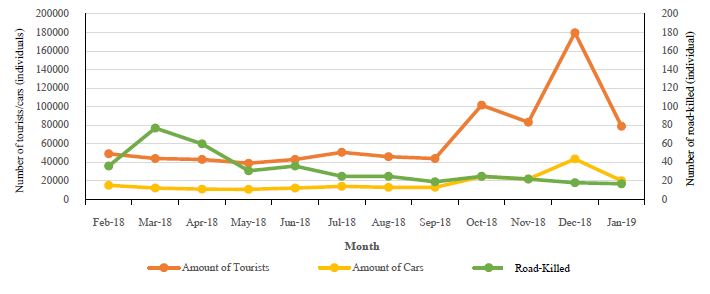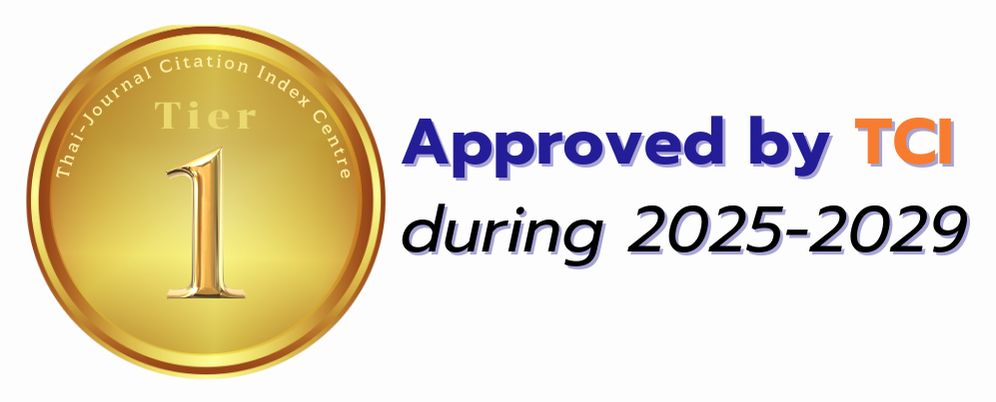Species and Abundance of Road-Killed Wildlife Carcasses on the Main Route in Khao Yai National Park
Keywords:
Wildlife roadkill, Khao Yai National Park, World Heritage SiteAbstract
This study aimed to detect wildlife species and number which were killed by crashed vehicle on the main route road in Khao Yai National Park, approximately 48 kilometers which started from the Shrine of Palad-jang entrance fee station, Nakhon Ratchasima Province, highway number 2090 (23-40) to Nern Hom entrance fee station, Prachin Buri Province, highway number 3077 (12-43). There were recorded the dead wildlife in the morning (considering the wildlife already died in at night) and in the evening (considering the wildlife already died all daytime) that divided for 4 days in each week (Monday, Wednesday, Friday and Saturday) in every month from February 2018 to January 2019. The results indicated that there were 95 species of dead wildlife which classified into 11 species 11 genus, 10 families 6 orders of mammals, 19 species 17 genus 11 families 5 orders of birds, 46 species 29 genus 11 families 2 orders of reptiles and 8 species 8 genus 5 families 1 order of amphibian. Moreover, 391 died wildlife were crashed by vehicle which separated that 58 mammals (14.83%), 30 birds (7.67%), 264 reptiles (67.52%) and 39 amphibians (9.98%). The result of regression analysis between the amount of vehicle and died wildlife was slightly correlation (R2= 0.1952) included minimally between the tourists and dead wildlife (R2= 0.1761). Furthermore, the day that have the highest number of died wildlife was on Wednesday (29.41%). Wildlife was mostly killed during the daytime (56.27%). In addition, died wildlife was significantly high in March (19.69%). The wildlife was remarkably crashed in summer (54.73%), particular at highway number 3077 (38-39). Because of there are the large water resources in west of road that led various species of wildlife come to utilize and high accidental occurred. Thus, in these areas the warning signs should be set up, included, the reduced speed block or create the wildlife corridors. In addition, the awareness on utilized the main road should be announced to the tourist at both entrance fee stations.
Downloads



.png)





